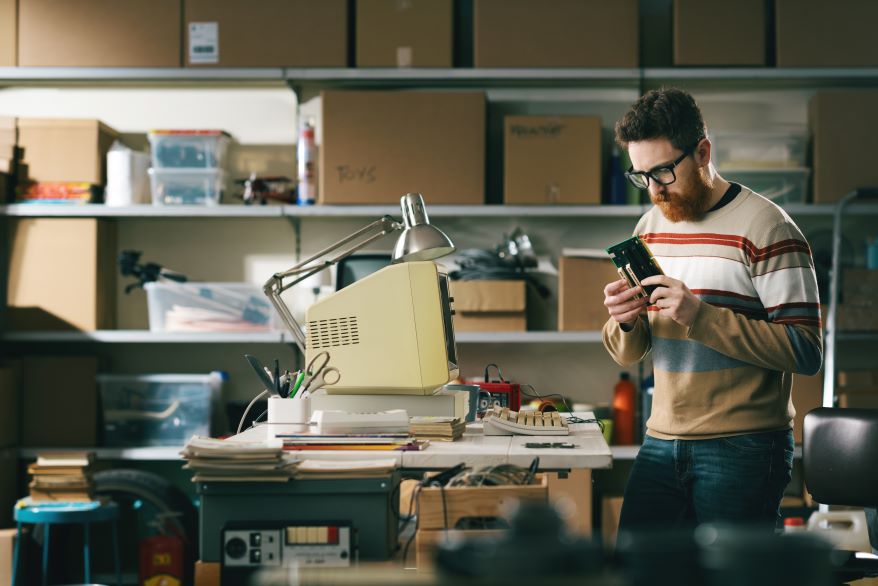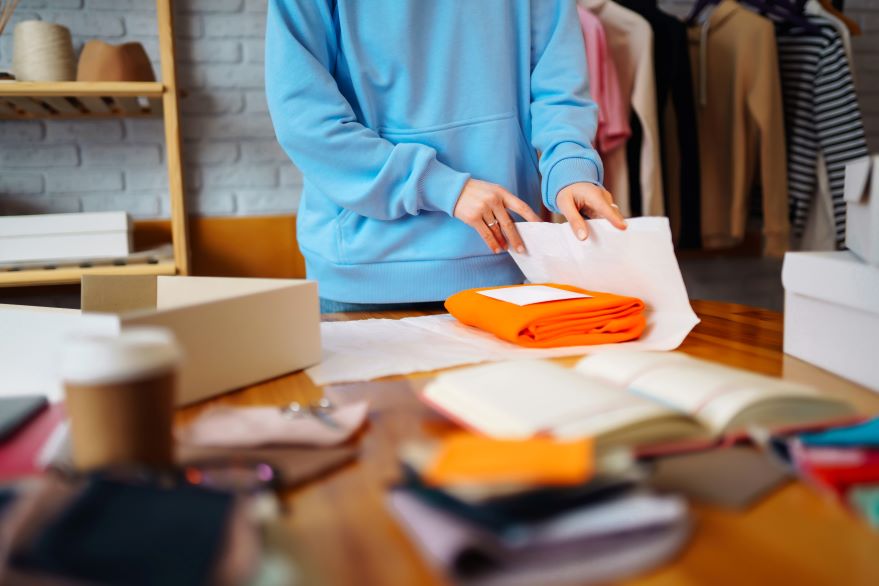The appeal of a side hustle and the benefits of second-hand shopping have never been more compelling. With Christmas around the corner and costs higher than ever before, buying and selling on pre-loved platforms can save money, boost sustainability, and even unlock rare treasures!
But there are key details to keep in mind, whether you’re a seasoned trader or a newcomer. Here’s your complete guide to navigating this space with confidence and ease.
Why buy and sell on second-hand sites?
1. Affordability: For those juggling seasonal costs—gifts, holiday gatherings, winter bills—turning to second-hand sites is a lifesaver. Shopping second-hand is ideal if you’ve got kids that are constantly outgrowing their clothes or if you’re looking to refresh your home décor without breaking the bank. It can stretch your budget and help you avoid the dreaded January financial hangover.
2. Environmental benefits: Sustainability isn’t just a buzzword. In the UK, approximately 350,000 tonnes of clothing waste are sent to landfills each year. With so much ‘stuff’, what’s not valuable to you anymore could be someone else’s treasure. When you buy and sell second-hand, not only do you reduce waste, but you contribute to a circular economy.
3. Unique finds: Second-hand shopping is like a treasure hunt. Whether it’s rare collectibles, out-of-stock items, or one-of-a-kind vintage pieces, you never know what you’ll uncover.
4. Extra income: Selling your pre-loved items is a smart way to declutter and earn extra cash. For some, this side hustle can turn into a steady stream of supplemental income.
Where to look for bargains?
- Facebook Marketplace: For local bargains, and often no shipping fees if you’re able to meet up to exchange goods. If you’re already a savvy social media user, why not see what people are selling in your community?
- Vinted: This app has boomed in recent months. It’s popular for clothing and accessories, but you can buy and sell homeware too. Vinted makes it easy to communicate via the app, if you want to avoid social media, and is all about haggling (politely, of course!)
- eBay: The classic go-to for just about anything, from high-end electronics to niche collectibles. You’d be surprised what people collect, from vintage crisp packets to old gadgets.
- Amazon Marketplace: Ideal for second-hand tech and books, though prices can vary.
- Gumtree: Great for finding local deals, especially for larger items like furniture.
- Freecycle: If you’re open to freebies, this is your place. People giving away items they no longer need can be a goldmine for savvy shoppers.

Beware the scammers!
While the online second-hand market has its perks, you need to have your wits about you. Here’s how to ensure you’re not caught out:
- Red flags: Be cautious if an item’s price is too good to be true, or if a seller is overly pushy.
- Pay safely: How you pay varies based on what platform you’re using. With Facebook Marketplace, you may meet in person and exchange cash or use a PayPal transaction. But other sites mean you pay through the platform. Beware of anyone trying to get you to pay via a dodgy-looking link, and always pay via the app’s payment system where possible, which provides built-in buyer protection.
- Dodgy profiles and pictures: Check the seller’s account; look for good reviews, ‘normal’ looking profile pictures (as opposed to stock photo headshots) and when the account was created. Sometimes, profiles created within the last month can signal trouble.
Remember, whenever you’re in doubt step away. It’s always better to be safe than sorry. Take a look at some more advice on spotting scams here.
What’s the secret to selling?
With so many people now turning to Vinted, eBay and Facebook Marketplace, it’s a crowded area. How can you cut through the noise, attract potential buyers and make the most from selling your items?
1. High-quality photos: Good lighting and clear images are a must. Multiple angles help buyers feel more confident in their purchase. People are more likely to stop scrolling for an image that catches their eye, so spend time making your items look the best they can.
2. Honest descriptions: Be transparent about an item’s condition and any flaws. A detailed description can prevent disputes, encourage positive feedback, and even repeat customers.
3. SEO optimization: Put yourself in a buyer’s shoes – what would you search if you were looking for a pair of women’s trainers? You can incorporate these search terms into your description, to boost your chances of appearing in someone’s feed. Use keywords that potential buyers might search for, like “size 6 women’s trainers,” “brand new with tags,” or “rare collector’s edition.” Specifying the brand in your description can also help.
The cost of selling
Selling your unwanted items can offer you anything from a little extra pocket money to a full-time side-hustle. It really depends how much time you can – and want – to put into selling.
Regardless, it’s worth understanding which platforms charge you for selling via their site and which don’t. Here’s a quick rundown:
- Facebook Marketplace: Free to buy or sell on the platform.
- eBay: Has scrapped its selling fees; you can list up to 300 items per month for free (excluding cars, vehicles and motorbikes). There are optional upgrades to boost your listings, for a fee.
- Vinted: Generally does not charge sellers but does charge buyers a small service fee.
- Amazon Marketplace: Takes a referral fee and may have other associated charges.
- Gumtree: Free to buy and sell, though you can pay to boost your ads.
And what about the tax implications of second-hand selling? Casual selling might be tax-free, but if your earnings exceed the annual tax-free threshold set by HMRC, you’ll need to report this income.
‘Digital platforms’ aka Vinted, eBay and the likes now have to collect extra information about sellers, including how many sales you’ve made and how much income you’ve generated. These platforms will have to start automatically sharing this information with HMRC by 31st January 2025.
If the total amount you earn via a platform in a tax year is £1,000 or less – you probably don’t need to tell HMRC or pay any extra tax. But if you earn over £1,000, then you need to check whether you need to pay tax or declare your income through self-assessment. You can read more on how to do this here.

Do I need insurance to sell online?
If your side hustle is expanding, it might be time to consider insurance. Home insurance policies sometimes cover belongings used for personal sales, but frequent, high-value sales might require separate business or liability insurance. This could help protect you in cases of disputes, returns, or even accidental damage during delivery.
So, if business is booming, why not check out what insurance you might need and how to find the right cover?
The second-hand market can be a goldmine for savvy shoppers and a viable side hustle for sellers. By staying alert and informed, you can make the most of these platforms and navigate potential pitfalls with ease. For help and advice about what cover you need, give your local Howden team a call or visit in person.
This is a marketing blog by Howden.

